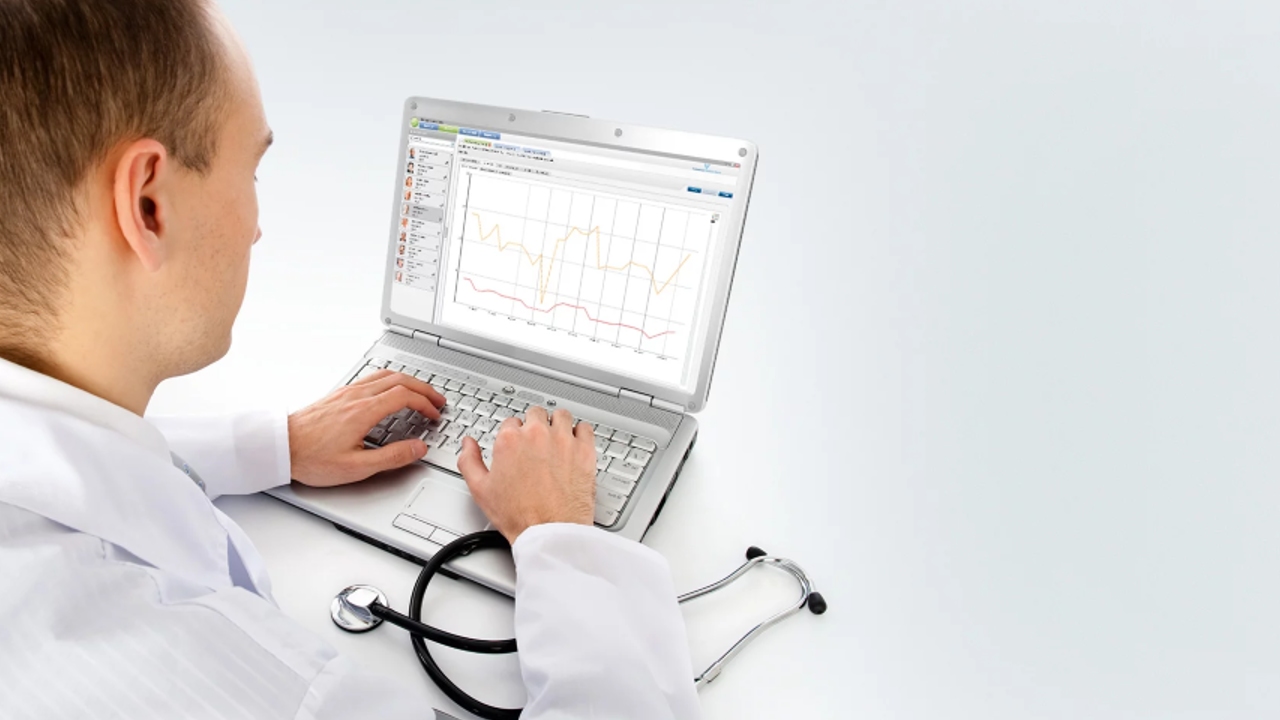Therapy data management.
Therapy Monitor (TMon)
| Optimization of resources | Less time is required for the documentation of patient data before, during and after dialysis • Initial pre-setting of the dialysis device • Bed-side monitoring via data Xchange panel (dXp) • Automatic treatment documentation |
| Increased accuracy of compiled data | Increased accuracy of the patient data to be documented related to dialysis • Automatic recording of the patient’s weight before, during and after dialysis • Automatic treatment documentation • Integration of peripheral devices • Blood pressure measurements |
| Shared use of data | Immediate and simple access to patient data for all users • Overview of the status of current treatments • Principle: “All information at a glance” |
In depth
| Initial pre-setting of the device | The Therapy Monitor supports the user in the patient specific pre-setting of the dialysis device. This means less time spent on the preparation of the treatment. |
| Documentation of the patient’s weight | Automatic documentation of the patient’s weight before and after dialysis. |
| Bed-side monitoring | The innovative data Xchange panel (dXp) is designed for the direct display and input of data such as check lists and medication on the 5008 CorDiax and 5008S CorDiax and thus directly at the patient’s bed-side. |
| Integration of peripheral devices | Peripheral devices such as blood gas analyzers or blood pressure monitors can be integrated into an extended data acquisition storage. |
| Overview of the status of current treatments | Any treatment information is readily available and clearly structured. |
| Automatic treatment documentation | The Therapy Monitor supports the user in the documentation of the treatment process, administered medication, events, and modifications in the treatment process. |
TMon study 1

The study
The TMon Study was performed in a dialysis unit of a hospital in Saarbrücken, Germany. There, the dialysis workflow of the treatments of 12 patients was analyzed for two nurses before and after the implementation of the Therapy Monitor. The study followed two approaches in order to identify the benefits of TMon for its users and the patients. The measurement of all dialysis related process times allowed for a quantitative analysis, whereas interviews with doctors and nurses formed the qualitative part of the study.
Study results
With the introduction of Therapy Monitor a change of the dialysis workflow becomes necessary. This improvement leads to savings of nursing time spent during dialysis. Overall, the workflow optimization and speed up of the processes results in a saving of approximately 25 minutes or 40% per dialysis treatment. This finally leads to more patient comfort and less stress for nursing staff.
Related content
1 Keil, M. (2015). SP761 Workflow Optimization and Process Automation in Dialysis Wards by Introducing a Treatment Monitoring System. Nephrology Dialysis Transplantaon, 30 (suppl 3), iii628 – iii629.






